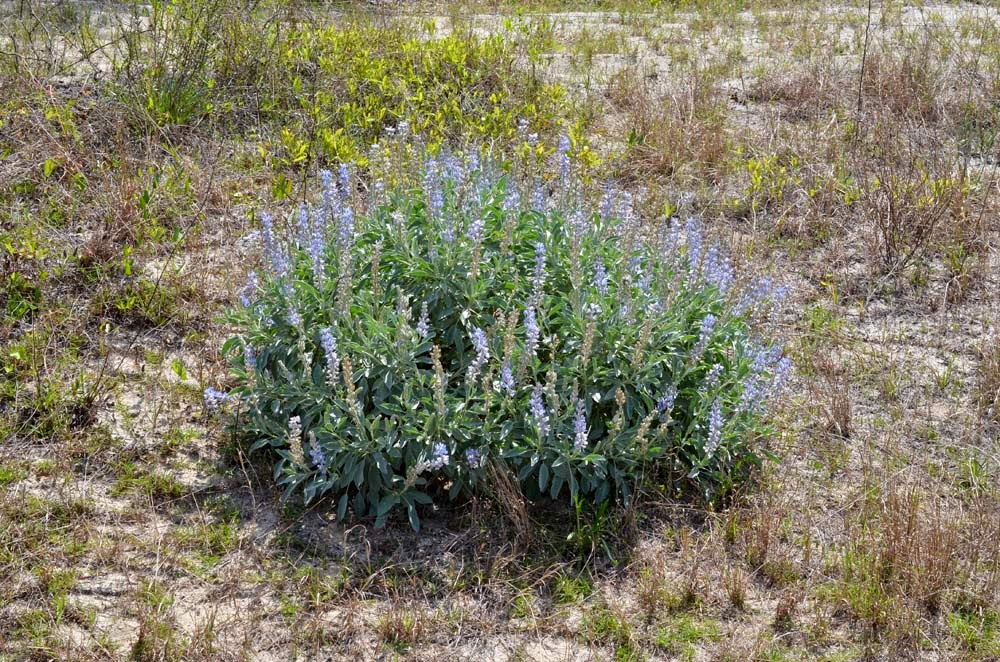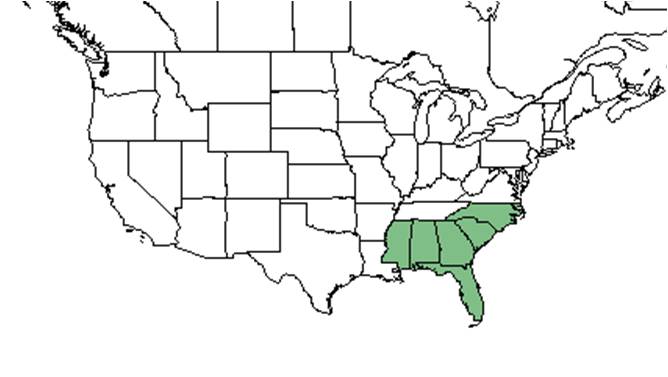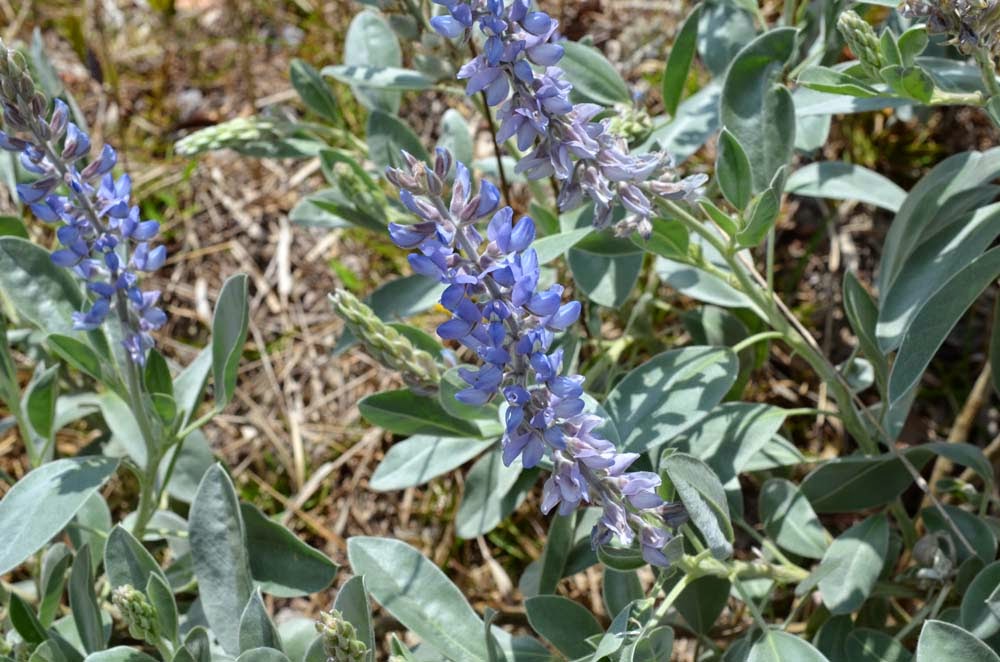Difference between revisions of "Lupinus diffusus"
KatieMccoy (talk | contribs) |
KatieMccoy (talk | contribs) |
||
| Line 42: | Line 42: | ||
Seeds are dispersed by wind and animals<ref name="dave">[[http://davesgarden.com/guides/articles/view/1598/#b]] Dave's Garden Accessed: February 9, 2016</ref>. | Seeds are dispersed by wind and animals<ref name="dave">[[http://davesgarden.com/guides/articles/view/1598/#b]] Dave's Garden Accessed: February 9, 2016</ref>. | ||
| − | ===Seed bank and germination=== | + | <!--===Seed bank and germination===--> |
===Fire ecology=== <!--Fire tolerance, fire dependence, adaptive fire responses--> | ===Fire ecology=== <!--Fire tolerance, fire dependence, adaptive fire responses--> | ||
Responds quickly to soil disturbance and fire <ref name="hawthorne">[[http://hawthornhillwildflowers.blogspot.com/2010/05/sky-blue-lupine-lupinus-diffusus.html]] Accessed: February 9, 2016</ref>. | Responds quickly to soil disturbance and fire <ref name="hawthorne">[[http://hawthornhillwildflowers.blogspot.com/2010/05/sky-blue-lupine-lupinus-diffusus.html]] Accessed: February 9, 2016</ref>. | ||
| Line 56: | Line 56: | ||
The legumes are toxic to animals <ref name="unf"/>. Foliage is eaten by aphids and caterpillars <ref name="dave"/>. | The legumes are toxic to animals <ref name="unf"/>. Foliage is eaten by aphids and caterpillars <ref name="dave"/>. | ||
| − | ===Diseases and parasites=== | + | <!--===Diseases and parasites===--> |
| − | ==Conservation and Management== | + | <!--==Conservation and Management==--> |
| − | ==Cultivation and restoration== | + | <!--==Cultivation and restoration==--> |
==Photo Gallery== | ==Photo Gallery== | ||
<gallery widths=180px> | <gallery widths=180px> | ||
Revision as of 14:30, 8 February 2016
| Lupinus diffusus | |
|---|---|

| |
| Photo by Wayne Matchett, SpaceCoastWildflowers.com | |
| Scientific classification | |
| Kingdom: | Plantae |
| Division: | Magnoliophyta - Flowering plants |
| Class: | Magnoliopsida – Dicotyledons |
| Order: | Fabales |
| Family: | Fabaceae ⁄ Leguminosae |
| Genus: | Lupinus |
| Species: | L. diffusus |
| Binomial name | |
| Lupinus diffusus Nutt. | |

| |
| Natural range of Lupinus diffusus from USDA NRCS Plants Database. | |
Common name: Oak Ridge lupine, Skyblue lupine
Contents
Taxonomic notes
Description
"Annual, biennial, or perennial herbs, rarely shrubs. Leaves palmately compound with (3) 5-15 (18) leaflets or 1-foliolate and then appearing simple; stipules partly adnate to the petiole, often caduceus. Racemes terminal with pedicellate, papilionaceous flowers subtended by usually caduceus bracts. Calyx conspicuously 2-lipped with the lips entire to deeply lobed; corolla commonly blue, white or yellow, rarely purplish, standard broadly obovate to orbicular and typically with reflexed margins; stamens monadelphous, filaments o two lengths, the longer with globose, versatile anthers, the shorter with linear, basifixed anthers; ovary sessile. Legume oblong, flattened, 2-12 seeded." - Radford et al 1964
"Cespitose herb perennating, decumbent stems 2-4 dm or more long from a woody taproot; more or less densely short-pubescent throughout. Leaves 1-foliolate, evergreen, mostly oblong to elliptic, 4-12 cm long, 1.5-5 cm wide; petiole 3-10 cm long; stipules fused to petiole for (0.3) 0.8-2 (3) cm , free portion filiform, 0.5-2.5 cm long. Racemes 1-3 dm long; pedicels 1-4 mm long, each subtended by a caduceus, subulate bract 4-8 mm long, the lower 3-lobed with the 2 laterals linear and ca. 2 mm long and the central 5-7 mm long; petals light to deep blue, the standard with a conspicuous cream spot. Legume linear-oblong, 3-4.5 cm long, 7-9 mm broad, appressed-pubescent with trichomes ca. 2 mm long.' - Radford et al 1964
Distribution
It is distributed through out the southeast, from Mississippi through North Carolina [1].
Ecology
Habitat
In the Coastal Plain in Florida, L. diffusus can occur in longleaf pine-scrub oak sand ridges, sand pine scrubs, deciduous scrub oak barrens, sand pine woods, and live oak-palmetto scrubs. Associated species include Carya floridana, Lechea, Chamaecyparis, Quercus virginiana, Q. laevis and Q. incana (FSU Herbarium).
Like many other legumes, L. diffusus has root nodules that contain nitrogen fixing bacteria that provide the plant with nitrogen, even in poor soils[2].
Phenology
Flowers January through May and fruits April through July (FSU Herbarium).
Seed dispersal
Seeds are dispersed by wind and animals[3].
Fire ecology
Responds quickly to soil disturbance and fire [4].
Pollination
The following Hymenoptera families and species were observed visiting flowers of Lupinus diffusus at Archbold Biological Station (Deyrup 2015):
Apidae: Bombus griseocollis
Megachilidae: Anthidiellum notatum rufomaculatum, A. perplexum, Megachile exilis parexilis
Use by animals
The legumes are toxic to animals [2]. Foliage is eaten by aphids and caterpillars [3].
Photo Gallery
Flowers of Lupinus diffusus Photo by Wayne Matchett, SpaceCoastWildflowers.com
References and notes
Deyrup, M.A. and N.D. 2015. Database of observations of Hymenoptera visitations to flowers of plants on Archbold Biological Station, Florida, USA.
Florida State University Robert K. Godfrey Herbarium database. URL: http://herbarium.bio.fsu.edu. Last accessed: October 2015. Collectors: Loran C. Anderson, J. Beckner, D. Burch, George R. Cooley, A.H. Curtiss, H.A. Davis, R.K. Godfrey, M. Hopkins, Ann F. Johnson, Beverly Judd, Walet Judd, Edwin Keppner, R. Kral, O. Lakela, Robert J. Lemaire, Fred L. Lewton, Sidney McDaniel, Grady W. Reinert, Paul O. Schallert, D.B. Ward, Kenneth A. Wilson, Carroll E. Wood, Jean Wooten. States and Counties: Florida: Brevard, Clay, Citrus, Coffee, Hernando, Highlands, Hillsborough, Lake, Levy, Marion, Okaloosa, Osceola, Polk, Santa Rosa, Seminole, Walton, Washington. Compiled by Tall Timbers Research Station and Land Conservancy.
Radford, Albert E., Harry E. Ahles, and C. Ritchie Bell. Manual of the Vascular Flora of the Carolinas. 1964, 1968. The University of North Carolina Press. 586-7. Print.
